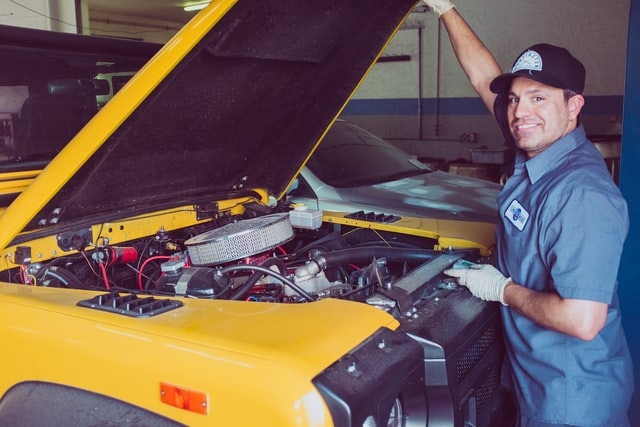Regardless of type or size, managing your business requires critical thinking skills. In addition to your finances and working with vendors, fleet management is one of those tasks that require a solid strategy from the start. Aside from purchasing the right kind of vehicle, you also need to think about how you’re going to keep them in top condition going forward. Granted, fleet management, especially if you’re new to it, might seem impossible. However, that’s what we’re here for is to give you tips on how to effectively manage your fleet while keeping costs low at the same time.
Ensure every vehicle is maintained
You’d be surprised how many people often sleep on vehicle maintenance. Vehicles are indeed built to last, but you should never skip out on routine maintenance, especially for your business fleet. There’s a reason why people recommend getting your vehicles checked every six months to a year. But for fleet vehicles, each one needs to be looked at every month or so. To be more precise, you should perform on any vehicle that has passed 3,000 to 5,000 miles before deploying it back on the road. You never know if there’s a minor issue that could cause irreparable damage later on down the road. Performing regular maintenance can help uncover hidden problems before they become expensive repairs.

It’s also no secret that fleet vehicle maintenance costs can add up. However, you’ll know when your vehicles need maintenance, thanks to your fleet management system. The amount you have to pay depends on how many vehicles are registered within it. You can expect to pay around $35 to $65 a month for each vehicle. Also, remember the cost can vary between geographic locations. For example, let’s say you had a total of 20 vehicles, and your monthly cost for them was $45. You can expect to pay an average of about $10,800 each year on maintenance. Here’s the simple way to calculate your costs: the number of vehicles in the fleet x the average rate x 12 months. This should give you a rough estimate of how much you’ll be paying each year so that you can budget accordingly.
Outfit each car with the proper technology

There’s more to fleet management than getting a bunch of vehicles, assigning a driver, and letting them hit the open road on their own. Each vehicle must be equipped with the proper technology before being allowed to be driven on the road. The first device you must install is known as an ELD. ELD is short for electronic logging device, and this device provides you with every detail about the car before, during, and after it was used. It will be able to monitor key metrics such as when it was first turned on, how many miles were driven that day, and when the car was turned off. And that’s just the gist of it, as it also tells you smaller areas of importance, such as how the vehicle was turned at a certain point in time. This lets you know if the driver was being reckless on the road.
ELDs are also government regulated, so you are mandated to install them in the vehicle. When it comes to placing in your fleet, this device is installed directly into the vehicle’s onboard diagnostics system (OBS). It records all the information listed above for you to review later. Combine ELDs with tachographs, which record the speed of the car, and you’ll be able to review every action that was taken in the car.
The second piece of technology you need to install is GPS tracking systems. GPS fleet tracking is how you prevent theft and other mishaps. It’s also how you keep tabs on each vehicle that’s currently in use. If something doesn’t feel right or you think one of your drivers are up to something that could cause harm to the business, you can lock down the entire car thanks to your GPS system. You can also utilize GPS fleet tracking software for its real-time data, extend tracking to remotely control the vehicle, and ensure everything is right on schedule. You can even use the software to find areas that need improvement while simultaneously cutting costs.
Screen all drivers
Fleet management stems from more than simply the vehicles themselves. You also need to know how to properly screen your drivers. Since they’re the ones driving your fleet, you want people you can trust. You’ll need to perform background checks, the validity of their driver’s license, and even their driving performance. If an applicant’s skills aren’t up to your standards, then you’ll have to keep looking. High-risk drivers can make it difficult to maintain insurance. You could also end up getting sued if they’re involved in an accident.
Don’t bite off more than you can chew
With something as important as your fleet, it should go without saying you need to be smart about where your money goes. We understand a business has its own set of rules, but you should never go overboard when it comes to expanding your fleet. The more vehicles you purchase, the more expensive it costs to maintain them. Not to mention, managing all those vehicles can be overwhelming, even for a professional fleet manager. However, not having enough vehicles can lead to a serious decline in business. Before expanding, take a look at your current fleet. How many vehicles do you think you need to add? Which vehicles do you think you’re currently missing? These are all questions you need to ask yourself before going ahead with the investment.
Don’t forget to rotate the usage
Something many new managers don’t take into consideration is vehicle rotation. This coincides with the maintenance mentioned above. Wear and tear are another common reason for regular inspection and maintenance. However, if you have drivers constantly playing favorites with certain vehicles, it’s not being distributed evenly. This can lead to being disorganized, cost you more money for repairs and rapidly decrease a car’s lifespan.

